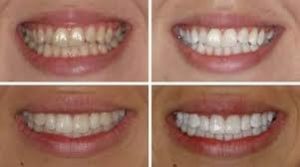Whitening
The most common procedure in general dentistry is tooth whitening. This is especially true in cosmetic dentistry. It’s a common observation that adults have darker teeth than their children. This is due to poor hygiene and food habits. Children have brighter teeth due to their healthy diet. Because of changes in the mineral structure, enamel becomes less porous with age. Whiteness can also be affected by medications like Tetracycline or similar antibiotics.

There are many options available for patients to choose from when it comes time to whiten their teeth. In-office bleaching is the most effective method of teeth whitening. This involves direct application to the patient’s teeth of the whitening product. The procedure can also include special light, laser or heat. Equipment is required to speed up the process and aid in recovery. There is one possible drawback to this method: patients may need multiple appointments to achieve the desired results.
Laser treatment is another option to teeth whitening. This is because it can achieve results within a matter of hours. This laser-enhanced bleaching can provide quick results but it is not a permanent one. If the person continues to smoke, drink alcohol, or use other substances that cause staining, the whiteness can fade within one month. The whiteness will last up to one year if the person can stop smoking or other similar activities.
Therefore, it is important to consider the individual’s needs, habits, and the nature of the stains.
